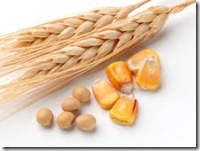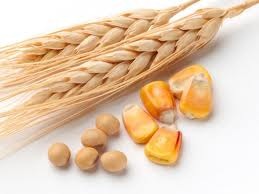 The 2011-12 corn and soybean marketing years will be characterized by the need to reduce consumption of both crops. The magnitude of those needed reductions are not yet known and the prices needed to make those cuts will depend on the strength of underlying demand.
The 2011-12 corn and soybean marketing years will be characterized by the need to reduce consumption of both crops. The magnitude of those needed reductions are not yet known and the prices needed to make those cuts will depend on the strength of underlying demand.
Based on the most recent USDA projections and the assumption that year ending stocks need to be maintained at or above 5 percent of consumption, corn use would need to be reduced by only about 30 million bushels, or 0.2 percent, during the year ahead. Soybean consumption would need to be reduced by 122 million bushels, or 3.7 percent. The actual reductions needed will depend on the final consumption estimates for the 2010-11 marketing year, the magnitude of old crop inventories on September 1, and the size of the 2011 harvest.
Unfolding evidence suggests that the 2011 U.S. corn crop could be smaller than the initial projection of 12.914 billion bushels. Preliminary certified acreage data released by USDA’s Farm Service Agency (FSA) suggests that planted acreage fell short of the NASS estimate of 92.282 million acres. In addition, weather conditions since late July in conjunction with early harvest results and yield survey results suggest that the U.S. average yield may be below the initial USDA forecast of 153 bushels. The USDA will release new production forecasts on September 12 and October 12. The final FSA acreage data, along with any additional information from the monthly NASS surveys, will be incorporated in the October production forecast. History also suggests that the October yield forecast will be reasonably close to the final estimate. The corn market is clearly expecting a substantial reduction in the forecast of 2011-12 marketing year corn supplies.
For soybeans, there is less as well as conflicting evidence about potential crop size. The USDA’s initial forecast of the U.S. average yield of 41.4 bushels was surprisingly small. At the same time, August weather has not been uniformly favorable for soybean crop development and FSA acreage data suggests that planted acreage may have been even less than the 74.958 million estimated by NASS. Recent price behavior suggests that the market is expecting a smaller crop than the current USDA forecast of 3.056 billion bushels.
Some of the needed reduction in corn and soybean consumption during the 2011-12 marketing year may occur as a result of weaker demand. There are multiple sources of a potentially weaker demand scenario for U.S. corn and soybean crops. These include the generally weak economic environment and continued high unemployment rate that could weaken demand for meat and livestock products; the current abundance of competitively priced wheat that could be substituted for corn and soybean meal in livestock feed rations; lower energy prices that would weaken the demand for biofuels; and larger South American crops in response to the current high prices.
Depending on the size of the 2011 harvest and the size of the old crop inventories at the beginning of the 2011-12 marketing year, weaker demand may not be sufficient to ration supplies. The market is currently reflecting expectations that higher corn and soybean prices will also be required to limit consumption. The market response to prospects for smaller supplies suggests that a “short crop” price pattern for corn and soybeans may unfold during the year ahead. Such a pattern would point to a price peak very early in the marketing year and then declining prices as the year progresses as evidence of slowing consumption unfolded. Elements for a decline in the rate of consumption may already be in place. The number of cattle in feedlots, for example, is currently high due to drought conditions in the southwest. Feedlot numbers will likely decline over the coming year. The profitability of poultry, milk, and hog production is being reduced by current price relationships. The ethanol blender tax credit is due to expire at the end of 2011 so that ethanol production above the mandated level will require favorable blending margins. Still, there is a lot of uncertainty about demand for U.S. corn and soybeans. These uncertainties include corn demand from China and the size of the upcoming South American crops.
While a lot of unknowns persist, it now appears that smaller supplies will push corn and soybean prices even higher in the short run, with prices peaking early in the marketing year and moving erratically lower into the winter.
http://www.dairyherd.com/dairy-news/Early-price-peak-for-corn-and-soybeans–128602033.html?ref=033

Deprecated: strpos(): Passing null to parameter #1 ($haystack) of type string is deprecated in /home/agriviek8Qv/agriviet.net/public_html/wp-includes/comment-template.php on line 2522